This is an updated version of a post originally published on 13 October 2022
The United Nations General Assembly has designated 13 October as the International Day for Disaster Risk Reduction (IDDRR), to promote a global culture of disaster risk reduction, increasingly important as the globe and its citizens weather the effects of climate change.
In 2023, IDDRR highlights the reciprocal relationship between disasters and inequality.
Inequality and disaster vulnerability are two sides of the same coin: unequal access to services, such as finance and insurance, leaves the most at risk exposed to the danger of disasters; while disaster impacts exacerbate inequalities and push the most at risk further into poverty.
https://iddrr.undrr.org/publication/concept-note-international-day-disaster-risk-reduction-2023
IDDRR is also a key date in the calendar for all collecting institutions, big and small, entrusted with the care of irreplaceable cultural heritage.
On this day, the Library joins Blue Shield Australia and other major Australian cultural institutions in raising awareness about the importance of Disaster Preparedness, Response and Recovery to protect and preserve our collections and the stories held within them.

YMS 13468, MS BOX 4546/9
Collection Disaster Preparedness and Response at the Library
The Preservation team, within the Collection Care branch, manages the Library’s Collection Disaster Preparedness, Response (CDPR) program, part of the Library’s broader disaster response plan. The purpose of the CDPR is to protect the collection from damage as the result of a disaster, natural or man-made.
Disasters may take many forms. The most obvious disasters that come to mind are fire, earthquakes and floods, though the most common risk is water damage caused by water leaks.
The four facets of disaster preparedness are: prevention, preparedness, response and recovery. In line with this approach, the foundation of the CDPR program is preparedness for all potential disasters. This begins with a trained staff and a well-equipped, well-organised and well-managed Disaster Store, stocked with a range of supplies including fans, rags, mops, buckets, gumboots, bins, paper towel, etc.
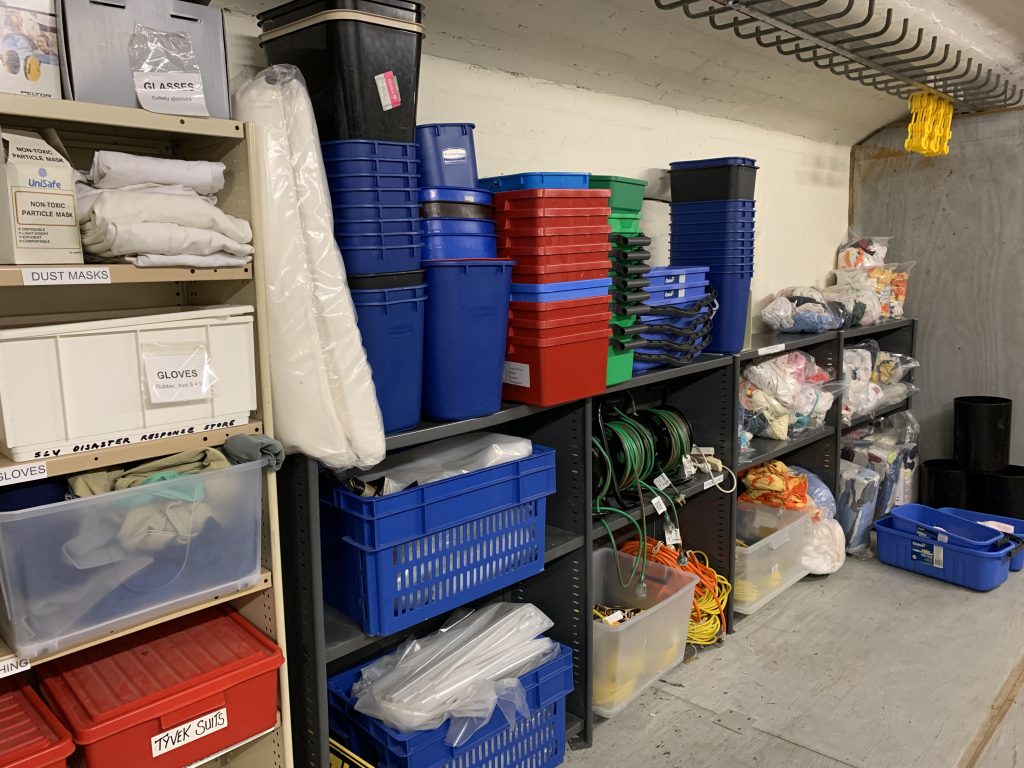
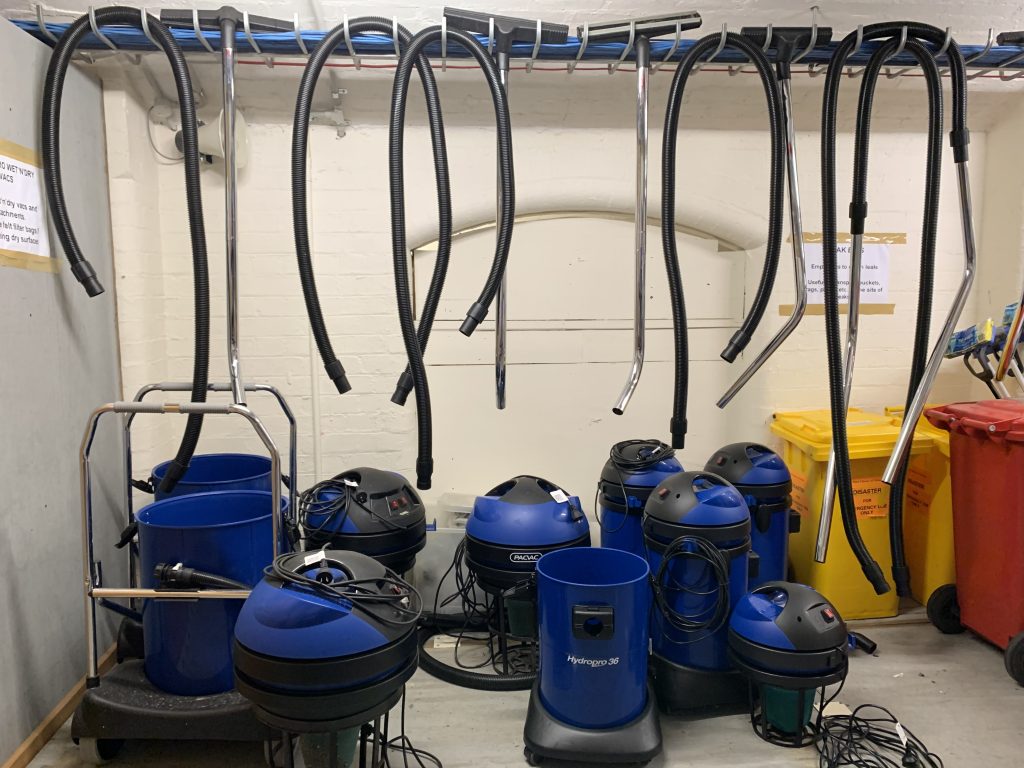
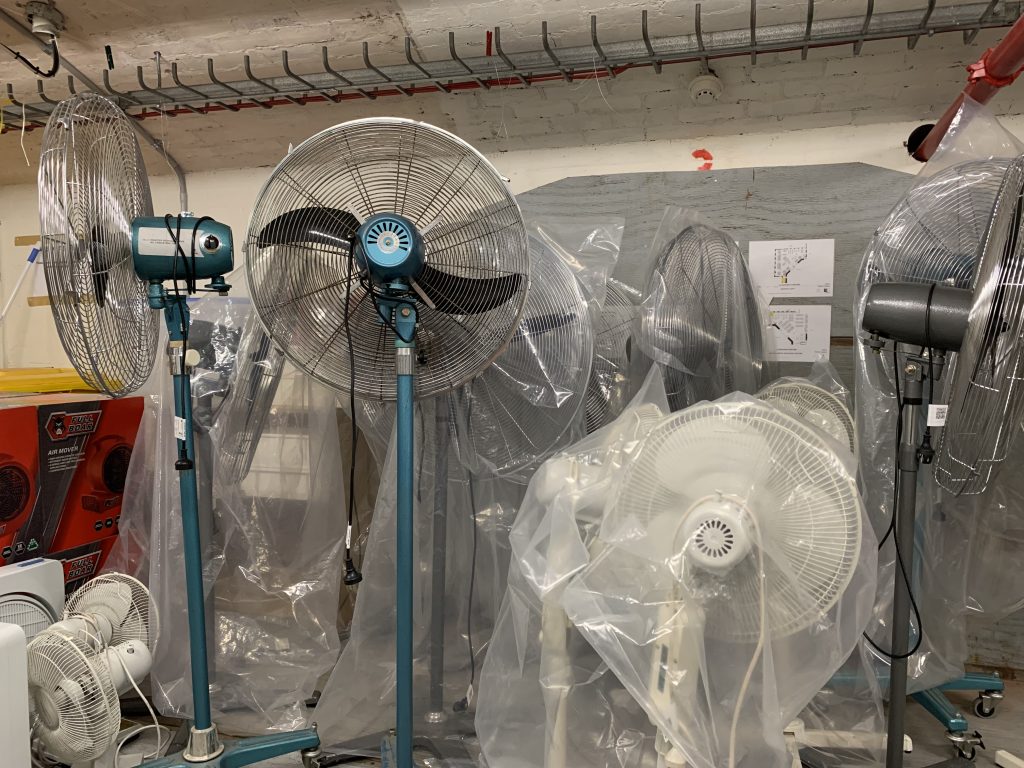

Yellow disaster bins are also placed within collection storage areas for ready access to rags and buckets in the case of an emergency.
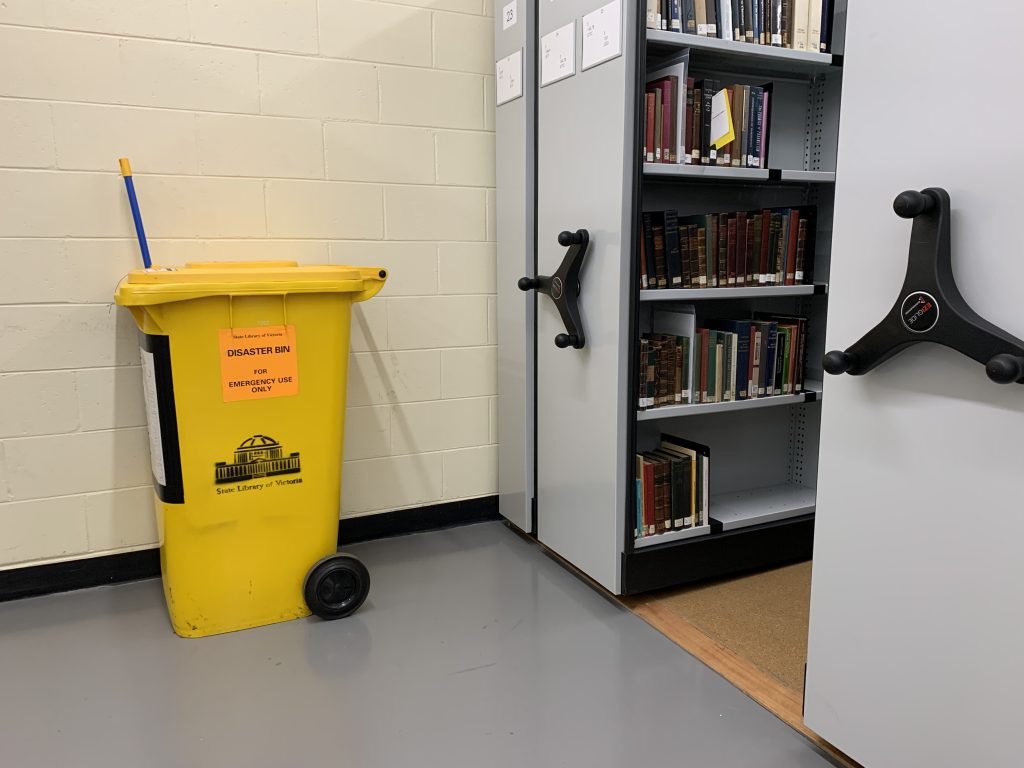
Response and Recovery teams primarily consist of Preservation and Conservation staff, however a number of personnel from across the Library also receive training because disasters don’t always occur during business hours!

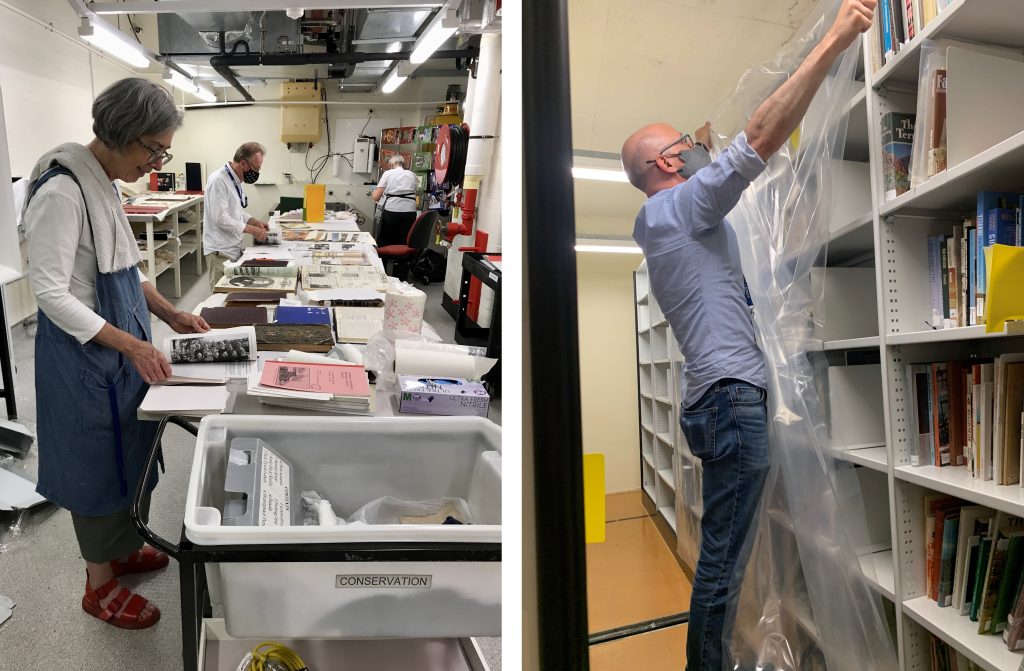
To ensure the response to any disaster is efficient and organised, procedures have been established clearly outlining responsibilities and expectations. In the event of a disaster, especially out of hours, there is a clear line of reporting and delegation, ensuring the most appropriate staff members are called in. Staff on call will be contacted to assess and respond to a potential threat or actual disaster. Preservation staff in the Response team and Conservation staff in the Recovery team may be called in to assist, along with Security and Property staff and Collection Managers.
As you can see, a huge amount of planning, training, and resourcing goes into the development and implementation of the Library’s CDPR program, often for a ‘rainy day’ scenario – pardon the pun!
However, it can’t be emphasised enough how important it is to review disaster preparedness plans and resources regularly.
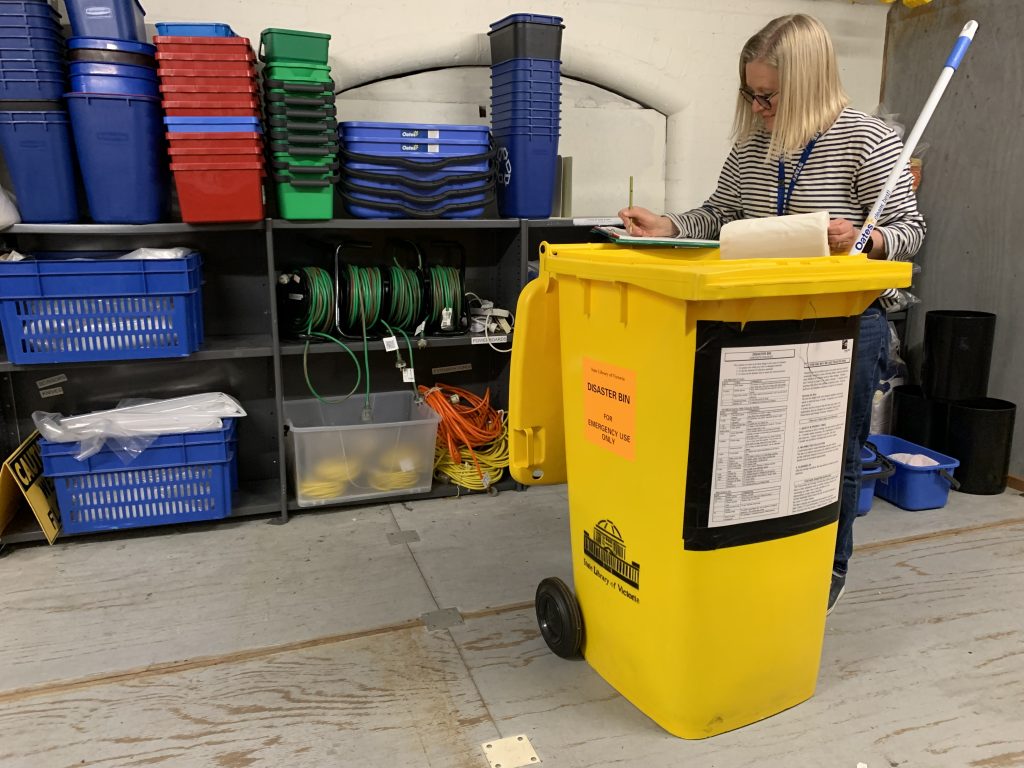
What you can do
So… for all the archives, libraries, museums, galleries, heritage places, historical societies, local history groups, and other cultural heritage organisations out there, large or small, today is the day to:
- update your Emergency Contacts List and make sure it’s accessible to everyone who needs it
- review your current disaster preparedness plan or develop a plan that covers a key activity in each of the four basic protection measures: prevention, preparation, response, and recovery
- contact your regional GLAM colleagues
- as a GLAM group, connect with your local council and emergency services contacts
Thanks to Blue Shield Australia for the above checklist. Make sure to head to their website for upcoming events and a suite of useful resources. Additional links below.
Links
Australian Institute for the Conservation of Cultural Material – disaster resources
Australian Institute for the Conservation of Cultural Material – find a conservator
UNDDR International Day for Disaster Risk Reduction
State Library Victoria – conservation guides
State Library of Queensland – salvaging damaged collections



